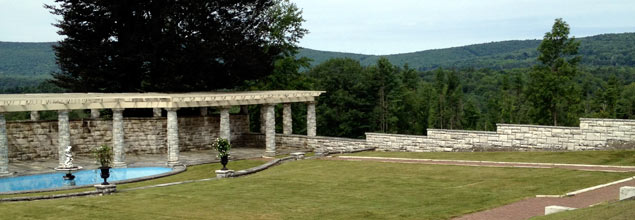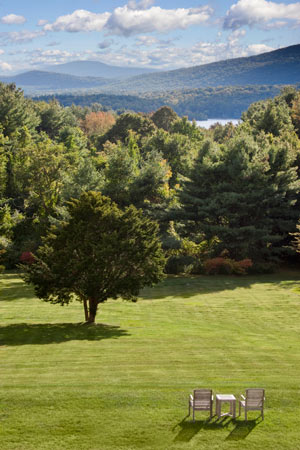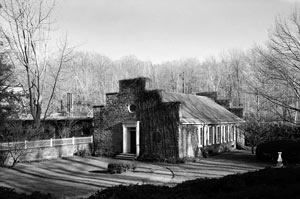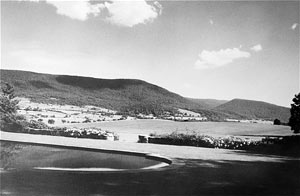The Olmsted Firm in the Berkshires

Elm Court in Lenox, photo by Adele Gravitz
*This feature was created for What's Out There Weekend Berkshires, held on September 21st and 22nd, 2013. Learn more about the weekend tours and events.
For over 130 years, the firm of Frederick Law Olmsted was the most successful landscape architecture practice in the United States, designing a wide range of public and private projects across North America. After relocating their headquarters from New York to Brookline, Massachusetts, outside Boston, in 1882, the firm completed a significant body of work in the commonwealth, including over sixty projects in the Berkshires spanning almost 100 years, from 1883 to 1979.

The view from Wheatleigh in Lenox, photo courtesy WheatleighWhile several of the firm’s Berkshires projects were completed during the tenure of Olmsted, Sr., the majority of the commissions took place in the first decades of the 20th century, when the firm was led by his two sons, John Charles Olmsted and his half-brother, Frederick Law Olmsted, Jr. Following Olmsted, Sr.’s retirement in 1895, they formed the Olmsted Brothers, which continued their father’s reformist design legacy, while also expanding the firm into a hugely productive, well-run business with a diverse practice. The two brothers would also contribute to the formalization of the landscape architecture profession as founding members of the American Society of Landscape Architects (ASLA). With a staff of over 60, the firm employed many designers who had significant careers, both independently and within the firm, including Warren Manning, Henry Sargent Codman, Charles Eliot, Arthur Shurcliff, James Frederick Dawson, Percival Gallagher, Edward Clark Whiting, and Henry Vincent Hubbard.
The numerous Gilded Age estates, or summer “cottages,” that were scattered throughout the Berkshire’s pastoral hills provided fertile ground for landscape architecture commissions. The firm designed thirty estates, primarily clustered around the bucolic towns of Pittsfield, Lenox and Stockbridge. One of the larger commissions was for the 380-acre grounds surrounding Wheatleigh, the mansion of Mrs. Carlos DeHeredia in Lenox. Much of the property’s original landscape design has been preserved as “Wheatleigh Park,” which is now operated as a luxury resort. Elm Court, the Shingle-style estate of Emily Vanderbilt and William Douglas Sloane, is another extant Olmsted estate design, also located in Lenox.


(upper) Crane Paper Mill in Dalton; (lower) the former Cluett Estate, now
part of Williams CollegeOne of the firm’s largest commissions in the Berkshires was the Williams College master plan. Between 1902 and 1962 the firm renovated much of the campus landscape, including the President’s House, the Cemetery and South College, as well as incorporating the George A. Cluett estate, one of their earlier projects in the region, into the campus acreage. In addition to Williams College, the firm also designed the grounds of several prep schools in the area, including Miss Hall’s School, the Buck School and Cranwell Prep School, which was later converted into a resort and golf course.The firm designed several public projects in the town of Dalton, just east of Pittsfield, home to the headquarters of Crane & Co., one of the country’s most successful paper manufacturers. From 1897 to 1950, the Crane family commissioned the Olmsted firm to design four of the family’s estates, the grounds of their mill, the town cemetery, and the grounds of the town library which is named in their honor.
Olmsted Project List in the Berkshires |
|
|
*Limited Firm Involvement City & Regional Planning Projects |
W.D. Sloane Estate, Elm Court, Lenox, 1907
|



